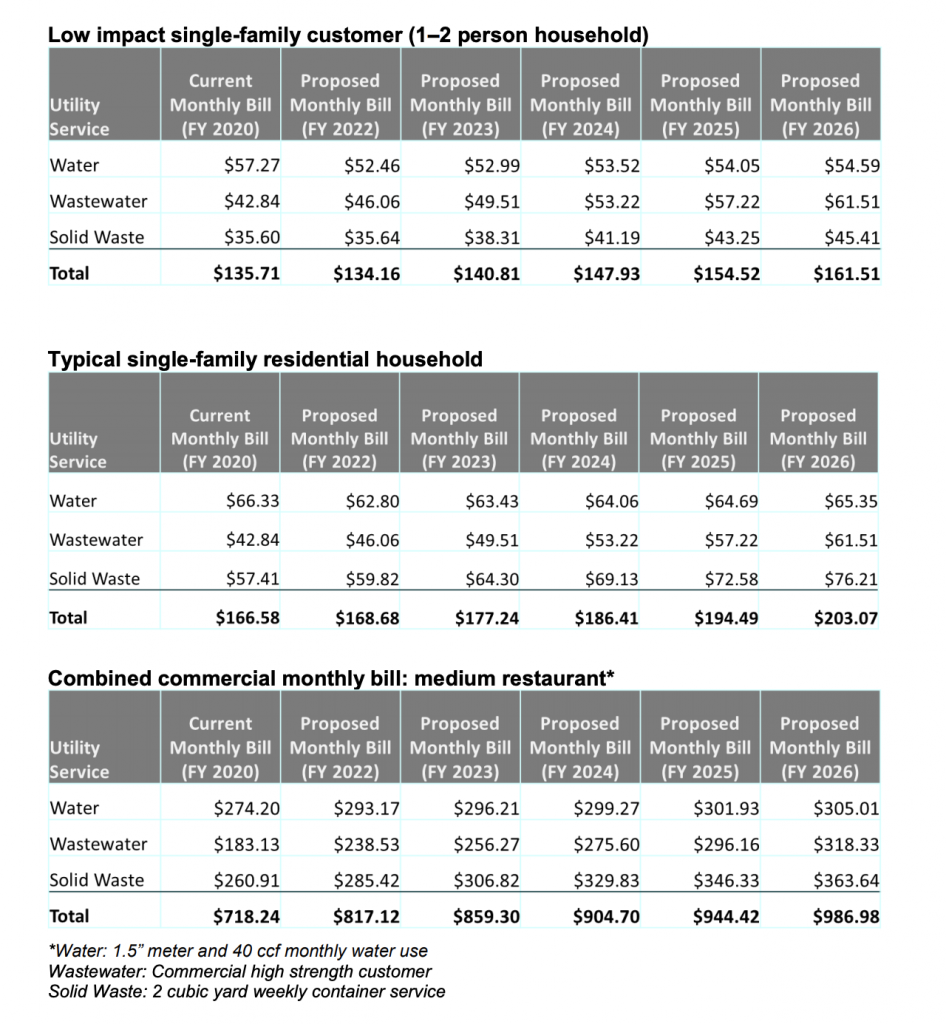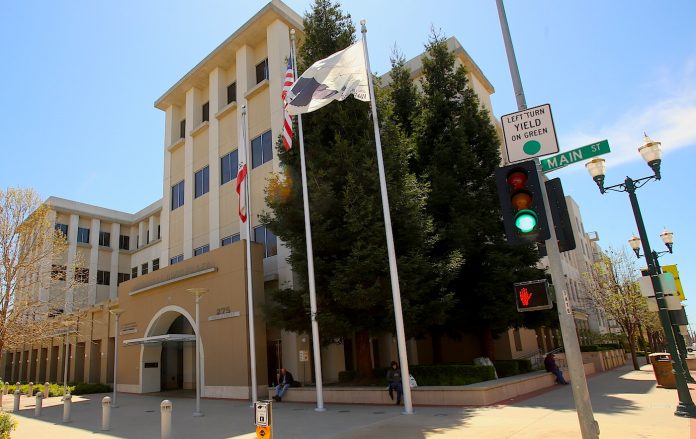WATSONVILLE—The Watsonville City Council at its March 9 meeting will see the results of a recently conducted rate study that recommends the city increase the cost of its utilities over the next five years.
The study, conducted by Raftelis Financial Inc., says the hikes are needed for the city’s Public Works & Utilities Department to stay fiscally solvent as it undergoes various infrastructure projects that have piled up over the years.
A typical single-family household would pay about $40 more per month by 2026, and a medium-sized restaurant would see its bill increase by about $270 per month in the same time.
No decision on the rate increases will be made at the meeting.
Because of Proposition 218, the city needs to first prepare and send notices to all property owners that receive their water, wastewater and solid waste services.
There will then be a 45-day public notice period in which property owners and customers can send written protests for consideration by the City Council. The Utilities Rate Study Report will be on file in the City Clerk’s office during this time.
The City Council is expected to schedule its first public hearing about the recommended rate increases for May 25.
Any increase would not be effective until July 1, the beginning of the upcoming fiscal year.

Watsonville has not raised its rates since 2015, when the City Council approved a $16 per month increase for a typical single-family household. At the time, Watsonville’s rates were half the cost of most other Santa Cruz County jurisdictions, and the gap has only increased since then.
The City Council was expected to weigh rate increases last year, but the pandemic sidelined those discussions. That decision, sought to lessen the burden on the thousands of Watsonville residents who faced financial uncertainty because of Covid-19’s spread, cost the city about $2 million in revenues.
Without a rate increase, the Wastewater Enterprise Fund is expected to begin experiencing a structural deficit by fiscal year 2024 and exhaust its working capital reserves by fiscal year 2026. Moreover, the Solid Waste Fund will exhaust its working capital reserves in fiscal year 2023 without the increase.
The Wastewater division over the next 10 years will begin three major projects that must be completed:
- Complete replacement of the Wastewater Treatment Plant’s (WWTP) electrical infrastructure, including the PG&E transformer, and standby generators at a cost of $15.5 million needed by fiscal year 2023
- Complete replacement of the WWTP’s Headworks and influent pump station at a cost of $15 million and proposed to be constructed in fiscal year 2027
- Reconstruct five pump stations and rehabilitate seven others at a cost of $9 million, proposed to be undertaken within the next 10 years
The Solid Waste division is facing financial pressures because of increased dumping costs at the Monterey Regional landfill—estimated around $1 million over the next five years—and the loss of revenues from recyclable materials.
In addition, the third phase in the closure of the city’s landfill will cost about $2.7 million, and various legislation will also balloon the division’s operating costs.
To see the complete March 3 agenda, click here.










